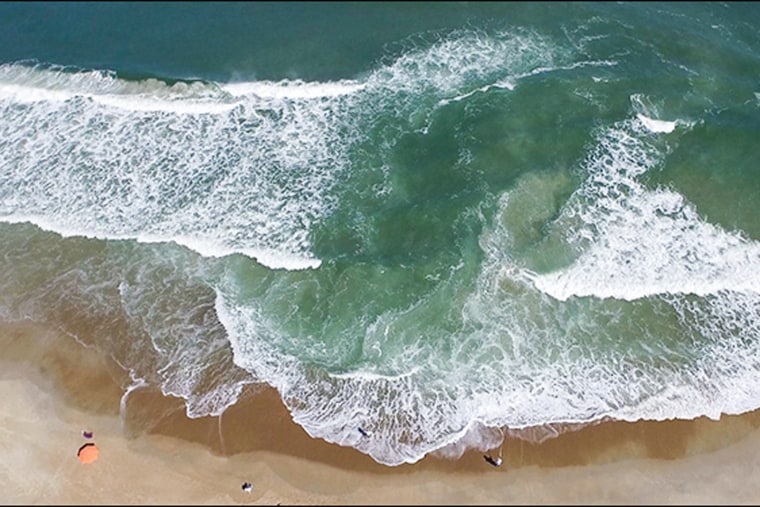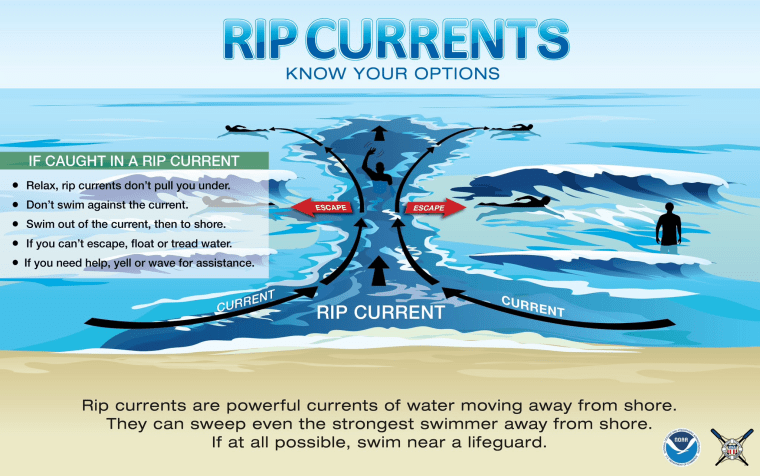A string of recent drownings from rip currents at beaches filled with summer revelers has raised concerns about the potentially deadly natural phenomenon.
In Florida, a Pennsylvania couple who were on vacation with their six children drowned after they got caught in a rip current swimming at Stuart Beach on Thursday. Three men from Alabama drowned Friday after they got caught in a rip current at Florida’s Panama City Beach. In the opposite corner of the East Coast, two teenagers disappeared in the water at the Jacob Riis Park beach in Queens, New York, last seen being overtaken by a huge wave on Friday.
Here’s how to stay safe in dangerous rip currents.
What is a rip current?
Rip currents are strong, fast-moving currents that flow away from the shoreline. They usually extend from the shoreline past the line of breaking waves, and they can happen at any beach with waves, including large lakes, according to the American Red Cross.
They move perpendicular to shore. They typically move 1 to 2 feet per second, but some have been measured at 8 feet per second — faster than an Olympic swimmer can sprint, according to the National Oceanic and Atmospheric Administration, or NOAA.

As a result, a person caught in a rip current can be swept away from the shore extremely quickly.
Rip currents account for more than 80% of rescues by surf beach lifeguards, according to an estimate by the United States Lifesaving Association.
Rip currents are commonly mistaken for rip tides. However, they’re different. A rip tide is a type of current that runs with the movement of tidal water through inlets and the mouths of estuaries, embayments and harbors, according to the NOAA.
What to do if you’re caught in a rip current
First off, don’t panic. Signal to shore for help.
Swim parallel to the shore, instead of toward it, until you’re out of the current. NOAA notes that most rip currents are less than 80 feet wide. Once you’re free of the current, turn and swim toward shore.
Alternatively, you can let the current carry you out as you float or tread water until the force weakens. Rip currents usually dissipate beyond the line of breaking waves, NOAA said. Then, once you’re out of the current, swim to shore.

How to help someone caught in a rip current
If you see someone in trouble, get help from a lifeguard. If a lifeguard isn’t available, have someone call 911.
If you see someone in a rip current, throw the victim something that floats and yell instructions on how to escape the current.
“It’s important to know that people can drown while trying to save someone else from a rip current,” the Red Cross warned.
Swimmers should also stay at least 100 feet away from piers and jetties, as permanent rip currents often exist near such structures, according to the Red Cross.
